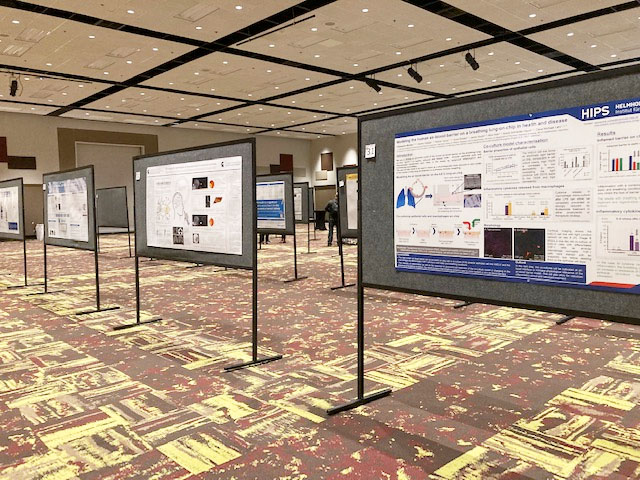The International Society for Aerosols in Medicine (ISAM) held its 2021 Congress as a hybrid meeting, with about 40 attendees gathering in Boise, Idaho and about 150 others gathering online from around the world. Some speakers presented their talks live in Boise while remote speakers appeared in pre-recorded presentations. Several of the sessions also featured oral presentations by the authors of selected posters. At the end of each session, both the in-person and remote speakers joined together via Zoom for a question and answer period.
ISAM made an effort to maintain the features of a normal meeting despite the limitations imposed by the COVID-19 pandemic. In-person attendees, who were almost universally fully vaccinated, generally maintained physical distance in the conference space; few also wore masks. Delegates in Boise were able to view posters and exhibitors in person, and most attended cocktail receptions held in the poster area and a gala dinner under a tent in front of Boise’s Basque Center.
COVID-19
In July 2020, the Journal of Aerosol Medicine and Pulmonary Drug Delivery published a statement from the ISAM Regulatory and Standardization Issues Networking Group citing “an urgent need to accelerate the development of inhaled therapies for COVID-19.” Not surprisingly, the COVID-19 pandemic was a major topic of discussion at the 2021 ISAM Congress.
On the first day of the meeting, a session on “Viral Pandemics – Transmission, Protection & Treatments” featured speakers Rajiv Dhand of the University of Tennessee, Gerhard Scheuch of GS-Bio-Inhalation, and Tyler Weiss of Rush University discussing many of the same issues covered in the statement: the evidence for respiratory transmission of the virus; the potential for aerosol therapies and how to go about development; and safety precautions for aerosol delivery to COVID-19 patients. The latter topic was also spotlighted in a sponsored session by Theravance Biopharma on “Nebulization in the COVID-19 Era: Evidence-Based Review.”
Speakers in other sessions addressed the pandemic as well, including Paul Terry of the University of Tennessee who discussed “The Relationship of Asthma and Covid-19,” including the question of whether asthma therapies reduce the risk of COVID-19, and particularly Jan De Backer of Fluidda, whose presentation on “Functional Respiratory Imaging: Lessons from Covid-19” covered many of the same findings described in his presentation at RDD 2021 regarding the effects of the virus on the pulmonary vasculature. In addition to discussing the value of deviations in regional blood vessel volumes for predicting which patients are more likely to require intubation and which are more likely to die from the virus, he also discussed the ability of FRI to identify continuing lung abnormalities in “long COVID” patients that are not identified by standard radiology. De Backer again called on the industry to prioritize better understanding of lung disease in the wake of the pandemic in order to more successfully treat patients when new respiratory diseases arise in the future.



